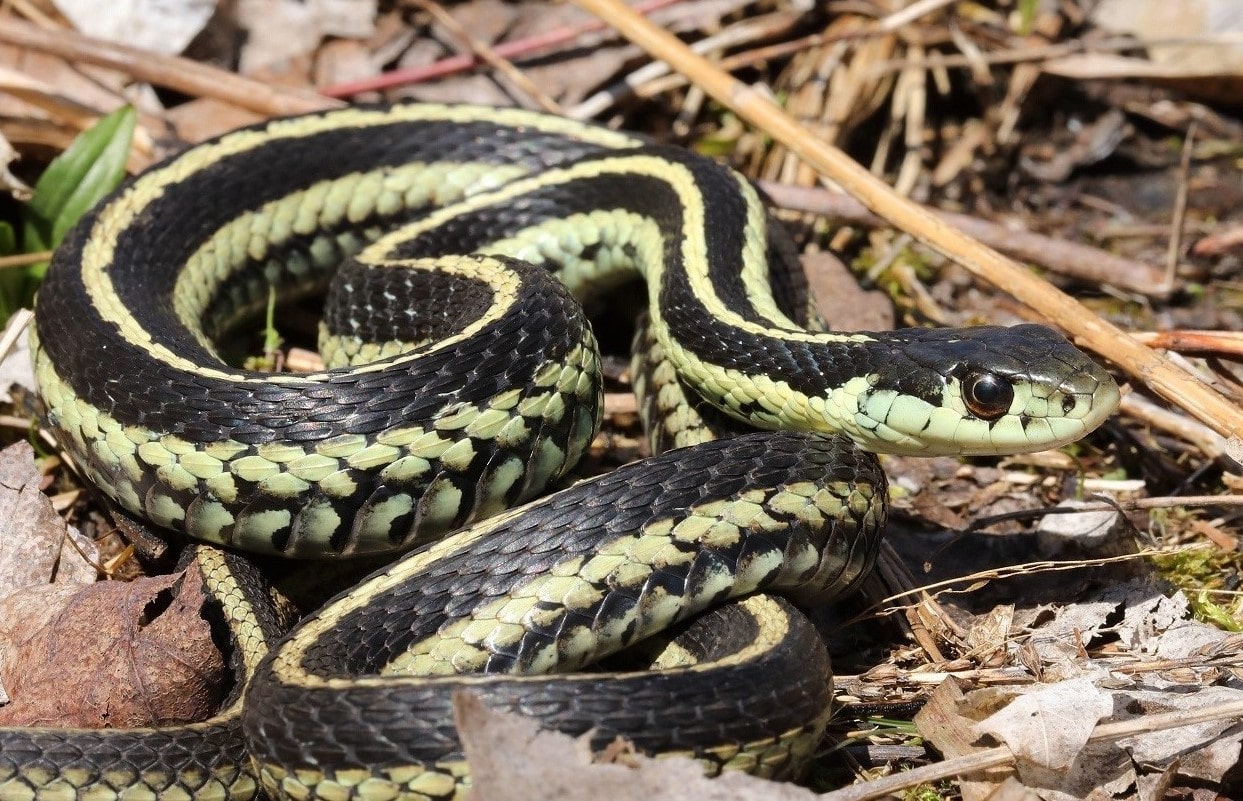
The mountain garter snake, also known as the Thamnophis elegans, is a fascinating reptile species found in the rugged mountainous regions of North America. With its striking colors and unique characteristics, this snake has captured the curiosity and interest of both nature enthusiasts and herpetologists alike.
In this article, we will explore 14 intriguing facts about the mountain garter snake that will shed light on its behavior, habitat, and adaptations. From its impressive ability to climb trees to its diverse diet and reproduction methods, these facts will provide a comprehensive understanding of this remarkable snake species.
So, if you’re ready to delve into the world of the mountain garter snake and discover some of its intriguing secrets, let’s get started!
Key Takeaways:
- Mountain Garter Snakes are impressive climbers, swimmers, and hunters with a unique color pattern. They play a vital role in their ecosystem by controlling small animal populations and serving as a food source for larger predators.
- These non-venomous snakes hibernate in groups, give live birth, and have a long lifespan. They are diurnal and exhibit excellent camouflage skills, making them fascinating creatures to observe in their natural habitat.
Impressive Size
The Mountain Garter Snake is known for its impressive size, growing up to four feet long. Its long and slender body allows it to move swiftly and glide through grassy areas with ease.
Beautiful Coloration
Mountain Garter Snakes have a distinct color pattern consisting of dark brown or black scales with a series of yellow or orange stripes running down their bodies. This unique coloration helps them to blend into their natural habitat.
Excellent Climbers
Unlike many other snake species, Mountain Garter Snakes are skilled climbers. They are often found climbing trees and shrubs in search of food or to bask in the sun.
Voracious Predators
These snakes have a diverse diet and are known to feed on a variety of prey, including small mammals, birds, reptiles, and amphibians. They are highly efficient predators, using their quick reflexes and powerful jaws to capture and swallow their prey.
Distinctive Behavior
Mountain Garter Snakes exhibit a behavior known as “musking” when threatened. They release a pungent odor from their anal glands, deterring potential predators and giving them a chance to escape.
Hibernate in Groups
During the colder months, Mountain Garter Snakes hibernate in large groups, sometimes numbering in the hundreds or even thousands. This communal hibernation helps them to conserve body heat and stay protected from predators.
Live Birth
Unlike most snakes, Mountain Garter Snakes give live birth instead of laying eggs. They typically have litters of 10 to 30 young, which are born fully developed and ready to fend for themselves.
Habitat Range
These snakes are typically found in mountainous regions, hence their name. They inhabit a variety of ecosystems, including grasslands, forests, and meadows, and can also be found near bodies of water such as streams and lakes.
Long Lifespan
Mountain Garter Snakes have a relatively long lifespan, with some individuals living up to 15 years in the wild. This allows them to reproduce multiple times throughout their lives.
Venomous or Harmless?
Contrary to popular belief, Mountain Garter Snakes are non-venomous and pose no threat to humans. They are harmless and play an important role in controlling populations of rodents and other small animals in their ecosystem.
Excellent Swimmers
Mountain Garter Snakes are adept swimmers and can easily navigate through bodies of water. They use their muscular bodies and flattened tails to propel themselves through the water with great agility.
Camouflage Masters
These snakes possess excellent camouflage skills, allowing them to blend in seamlessly with their surroundings. Their coloration and pattern help them to hide from both predators and prey.
Active During the Day
Mountain Garter Snakes are diurnal, meaning they are most active during the day. They spend their time hunting, basking in the sun, and exploring their environment.
Vital Role in Ecosystem
The Mountain Garter Snake plays a vital role in maintaining the balance of its ecosystem. By controlling populations of small animals and serving as a food source for larger predators, they contribute to the overall health and stability of their habitat.
Conclusion
After exploring these fascinating facts about the Mountain Garter Snake, it’s clear that this species is truly remarkable. From its unique appearance and behavior to its important role in the ecosystem, there is much to admire and appreciate about these snakes. They serve as a reminder of the incredible diversity of animal life on our planet and the importance of protecting and conserving these species. The Mountain Garter Snake is an integral part of the natural world, and its existence contributes to the delicate balance of nature in mountainous regions. So, the next time you encounter a Mountain Garter Snake, take a moment to marvel at its beauty and significance in the animal kingdom.
FAQs
Q: What is the Mountain Garter Snake?
A: The Mountain Garter Snake, scientifically known as Thamnophis elegans, is a species of non-venomous snake found in various mountainous regions of North America, including the Rocky Mountains and Sierra Nevada.
Q: What does the Mountain Garter Snake look like?
A: The Mountain Garter Snake has a slender body with a distinct pattern of yellow or greenish stripes running along its back. It can reach lengths of up to three feet and has a keeled scale texture, which gives it a rough appearance.
Q: What do Mountain Garter Snakes eat?
A: Mountain Garter Snakes primarily feed on small vertebrates, such as lizards, frogs, fish, and rodents. They are excellent hunters and use their speed and agility to catch their prey.
Q: Are Mountain Garter Snakes venomous?
A: No, Mountain Garter Snakes are non-venomous. They rely on constriction to subdue their prey instead of injecting venom.
Q: How do Mountain Garter Snakes reproduce?
A: Mountain Garter Snakes are ovoviviparous, which means their eggs hatch inside the female’s body, and she gives birth to live young. The average litter size ranges from 4 to 20 snakes.
Q: Are Mountain Garter Snakes dangerous to humans?
A: Mountain Garter Snakes are generally harmless to humans. They rarely bite unless provoked or threatened. However, it’s important to treat all snakes with respect and avoid unnecessary contact.
Q: How can I help conserve Mountain Garter Snakes?
A: Supporting conservation efforts, such as protecting their natural habitats and promoting awareness about the importance of biodiversity, can go a long way in helping conserve Mountain Garter Snakes and their ecosystems.
Delving into the world of the Mountain Garter Snake is just the beginning of your journey into the fascinating realm of reptiles and wildlife. Uncover more captivating facts about reptiles in our article "13 Best Facts About Reptiles." Explore the unique characteristics of garter snakes in "14 Extraordinary Facts About Garter Snake." Broaden your knowledge with "19 Facts About Wildlife" and discover the incredible diversity of wildlife that surrounds us.
Was this page helpful?
Our commitment to delivering trustworthy and engaging content is at the heart of what we do. Each fact on our site is contributed by real users like you, bringing a wealth of diverse insights and information. To ensure the highest standards of accuracy and reliability, our dedicated editors meticulously review each submission. This process guarantees that the facts we share are not only fascinating but also credible. Trust in our commitment to quality and authenticity as you explore and learn with us.


